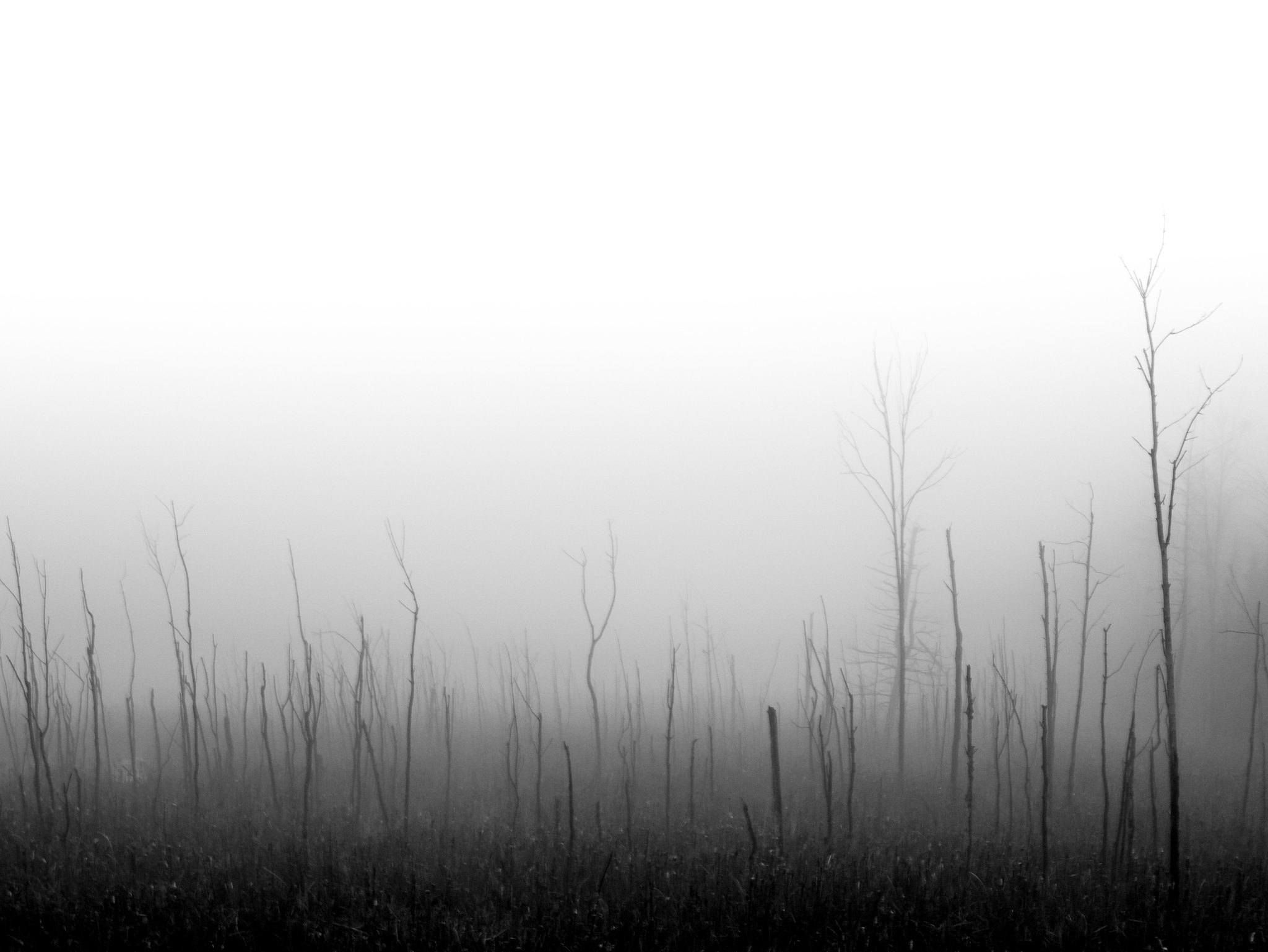What is Minimalism?
I love landscapes. If you glance over my body of work, you will see right away that the vast majority of it is natural scenes. Fortunately, I’m not alone: nearly everyone loves landscapes. They have a universal appeal that I’ve written about before, both for photographers and viewers. However, while anyone can take a landscape photo, capturing truly masterful images is far more difficult than most people understand. In fact, the landscape photographer is no stranger to failure, as they are at the mercy of Mother Nature whenever they try to shoot.
As you become more competent at landscape photography, you will begin to notice that there are many ways to shoot the same landscape. Some photographers choose to portray the ultrarealistic, attempting to capture the scene exactly as they saw it. Others prefer the vibrant depth of HDR images. Today, I’m going to briefly cover another method of shooting landscapes – minimalism.
Minimalism is not the most common method of shooting landscapes. It is also not the easiest. However, it is well worth considering, as images that incorporate minimalism are often visually striking.
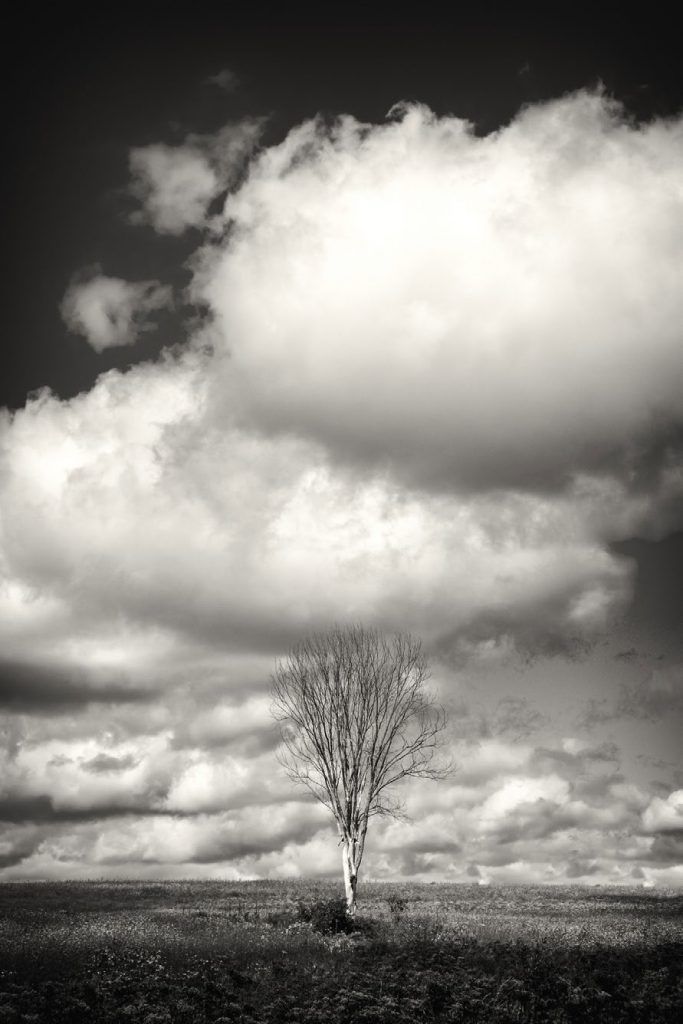
Photo by David Veldman
So what exactly is minimalism? In visual arts, minimalism refers to the attempt to reduce the subject to its essence, while removing anything non-essential. It is a modern ideal, made popular in the years after the Second World War. In terms of photography, we can think of it as ‘using as few elements as possible.’ We must be careful not to confuse minimalism with abstraction. Minimalism seeks to decrease the number of elements in an image, while abstraction is a non-literal way of seeing. The two are often closely related – many minimalist images make great abstracts.
Minimalism seeks to decrease the number of elements in an image, while abstraction is a non-literal way of seeing.
What do I mean when I say ‘elements’? I am referring to the building blocks of an image. Take a look at the image on the left.
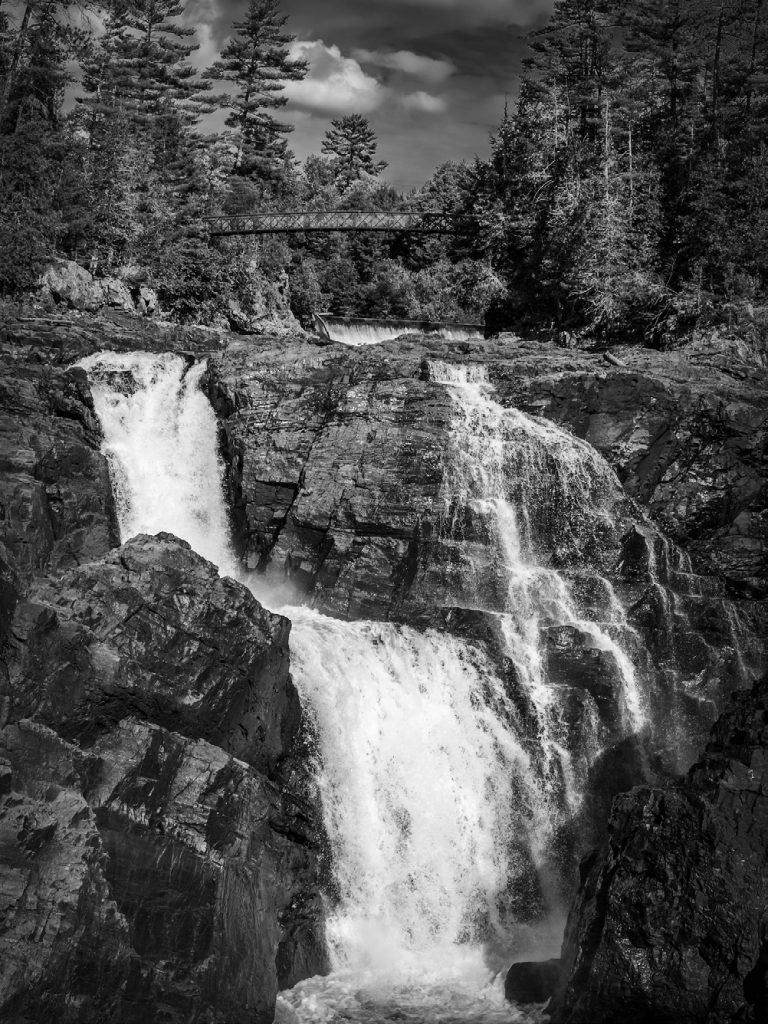
Photo by David Veldman
There are multiple elements in this shot (above). In fact, it is quite visually busy. In the far background, we have a cloudy sky framed by evergreen trees. Below that, we find the bridge, and finally the main subject – the white water flowing over the craggy rocks. Right away, we can see that there are five elements in this image. It’s not minimalist at all.
Compare that with the next shot.
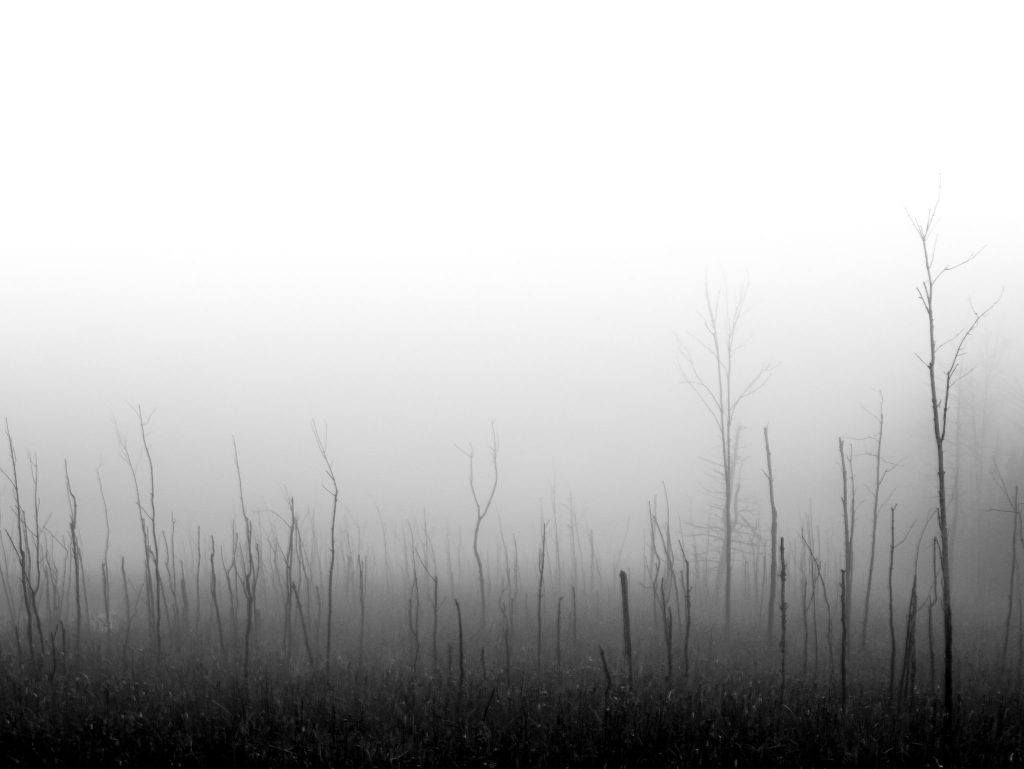
Photo by David Veldman
This shot is essentially two elements: the stark naked saplings and the white, featureless fog they disappear into. The frame is not empty, but the shot does not feel busy, thanks to the repetitive shapes and simple light-to-dark gradient.
If we want fewer elements, wouldn’t it make sense to reduce it down to a single element? While you can do this, it doesn’t usually produce ideal results. I find that at least two elements are required to create a stunning shot. This allows you to create balance or tension.
Recommended Reading: To learn more about using composition to improve your photography, including the effective use of space and elements, grab a copy of Photzy’s best-selling book, Advanced Composition.
Why Minimalism?
As I mentioned before, creating minimalist landscapes is not easy. The more elements we remove, the less we have to work with. So why bother trying to strip our images down like this?
The answer, of course, is simplicity.
Simplicity creates strong images. When viewers are presented with a visually busy image, they may feel overwhelmed. The individual elements may be beautiful on their own; however, it is possible that when combined they are not harmonious. This happens all too often, particularly with landscapes; on more than one occasion, it has happened to me. I’ve spotted a beautiful scene, tripped the shutter, and gone home. When trying to process the shot, I realize that it is far too busy. There is nowhere pleasant for the eye to rest.
Practicing the art of minimalism will reduce the likelihood of this happening. Even if you don’t shoot purely minimalist landscapes, understanding the concepts behind them will help you to keep your images balanced and uncluttered.
Practicing the art of minimalism will help you create stronger images.
So what makes a minimalist landscape work? Most successful minimalist images use other techniques in conjunction with minimalism. Below, I’m going to highlight some of those techniques. I’ll also show you examples, point out why they work, and how you can apply this to your work.
Color
Below is a perfect example of a minimalist image. There are literally only two elements: the well-manicured greenery and the striking, scarlet umbrella. Two compositional elements are at play here: the oblique lines that create a dynamic viewing path, and the juxtaposition between colors.
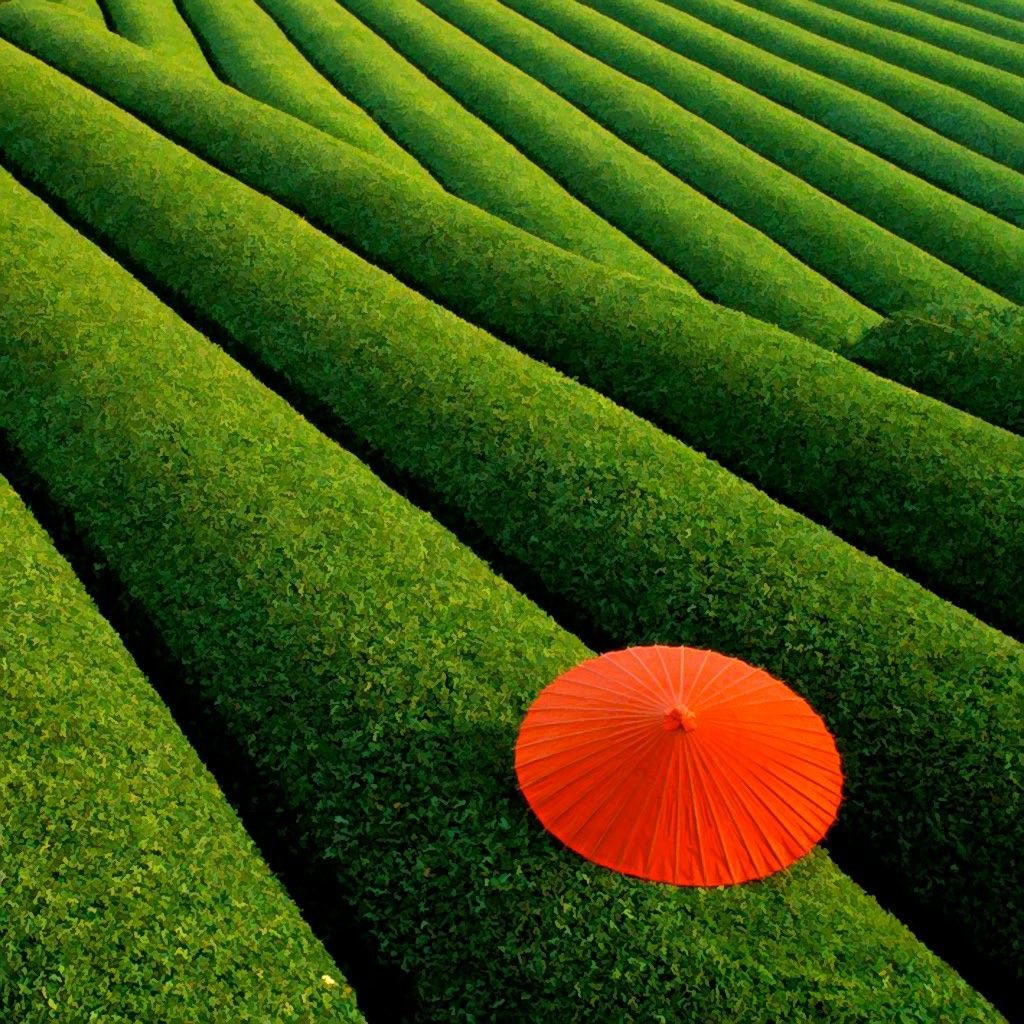
Photo by Brett Jordan
Do you think that the image would have been as effective if the umbrella were black? I don’t. Even blue would have resulted in a less ideal image. The red and green are complementary colors that contrast each other effectively.
When you compose your minimalist images, remember that a color can be an element in itself. While you can use this to your advantage, it can also pose unique challenges. Nature does not always conveniently arrange her color palette. If necessary, you may need to convert some images to black and white to sidestep this issue.
Recommended Reading: To learn more about using composition to improve your photography, including the effective use of space and color, grab a copy of Photzy’s best-selling book, Advanced Composition.
The Sky
You’ll quickly find one of the greatest allies in your quest for minimalism is the sky. You can combine the sky (particularly if it is cloudless) with a foreground element to create a simple, yet striking image.
In the photo below, the sand contrasts beautifully with the sky. This is intensified by the color (as I previously mentioned) with the tan of the sand providing a nice counterpoint to the blue, cloudless sky. Although clouds often add drama to a scene, I prefer this image without them.
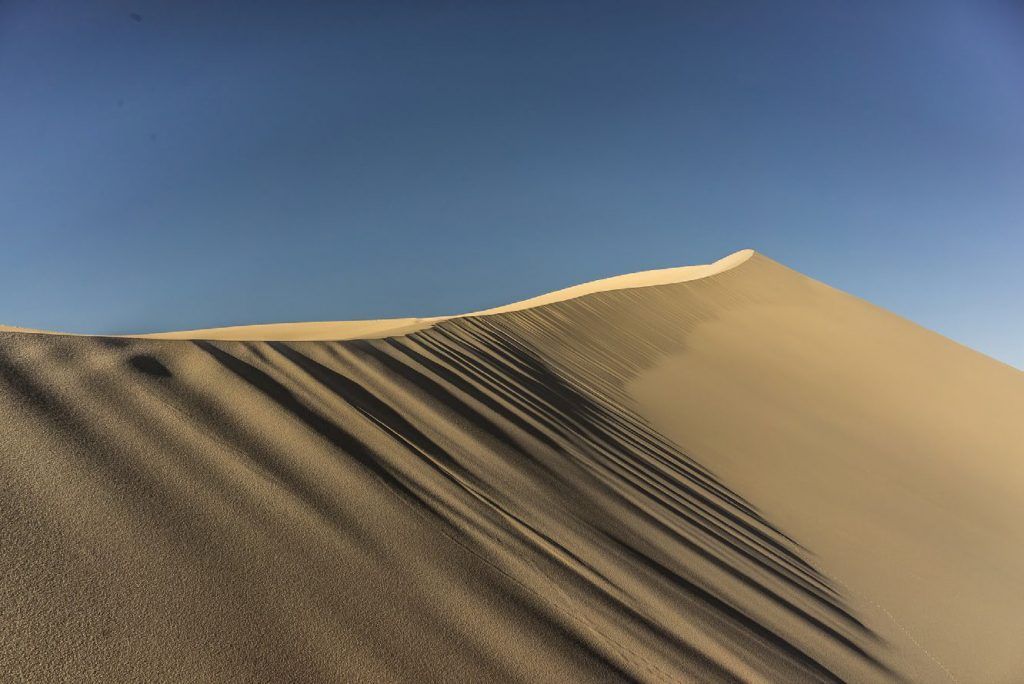
Photo by Peretz Partensky
Silhouette
As I mentioned earlier, the sky plays an important part in minimalist landscapes. One of the ways that you can creatively use the sky is with silhouettes. Silhouettes are usually very visually striking, primarily because of the contrast they create. Effective use of silhouettes will create memorable images.
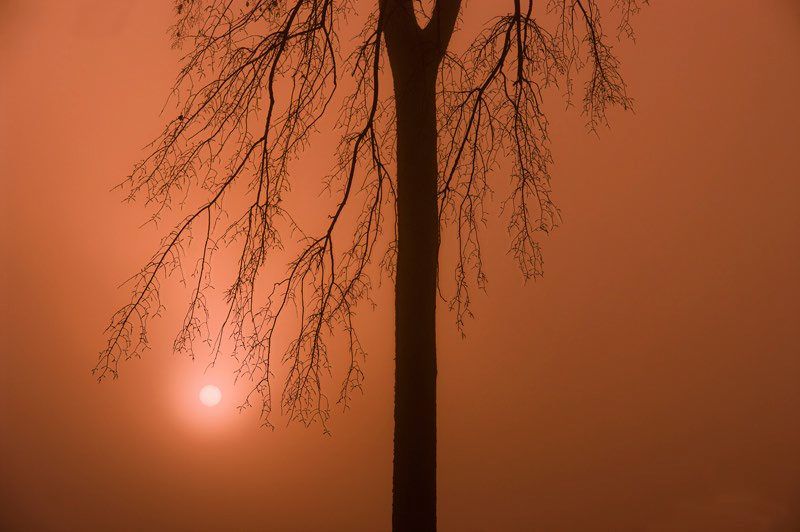
Photo by Phillip Grondin
Here (above) we have three distinct elements. First, we see the sky, which gives us an orange canvas. Against that, the photographer placed the pleasing shape of the tree. The image would have been acceptable at that point, but the fiery light of the sun provides the perfect finishing touch. The photographer made the right choices here to create a visually stunning, simple work.
One of These Things
In another tutorial that I wrote, I spoke about the technique of juxtaposition. Simply put, this involves using two contrasting elements, such as old and new, bright and dark, tall and short etc. Because minimalism involves using the fewest possible elements, it is extremely important that we ensure the elements are harmonious, or complementary. The easiest way to achieve this is by having one of the elements visually stand out. I’m a sucker for these types of shots. I call it the ‘lone tree effect,’ and if done right, it produces fantastic images. Take a look at the image below:

Photo by Mark Freeth
This image is striking, primarily because of juxtaposition. The juxtaposition is also working on several levels. On the literal plane, the tower is providing a vertical contrast – it physically towers over the surrounding fields, much as a lone tree might. However, a lone tree would have less impact, because the tower also provides a mental contrast. It is the solitary man-made item in an otherwise natural scene. If there were a line of towers or a house in the foreground, the image would be weakened considerably. This scene works so well primarily because it is minimalist.
Contours
At times, it can be easy to lose sight of the forest for the trees. Living in a heavily forested nation, I have some experience with this – literally! Instead of seeing the flow of the land, the peaks and valleys, I just see a mess of trees. However, it is possible to use the actual contours of the land to create stunning minimalist images. There are a few tricks to this. You need to pick the appropriate time of day when shadows create depth in the contours. You can also use a telephoto lens to compress perspective.
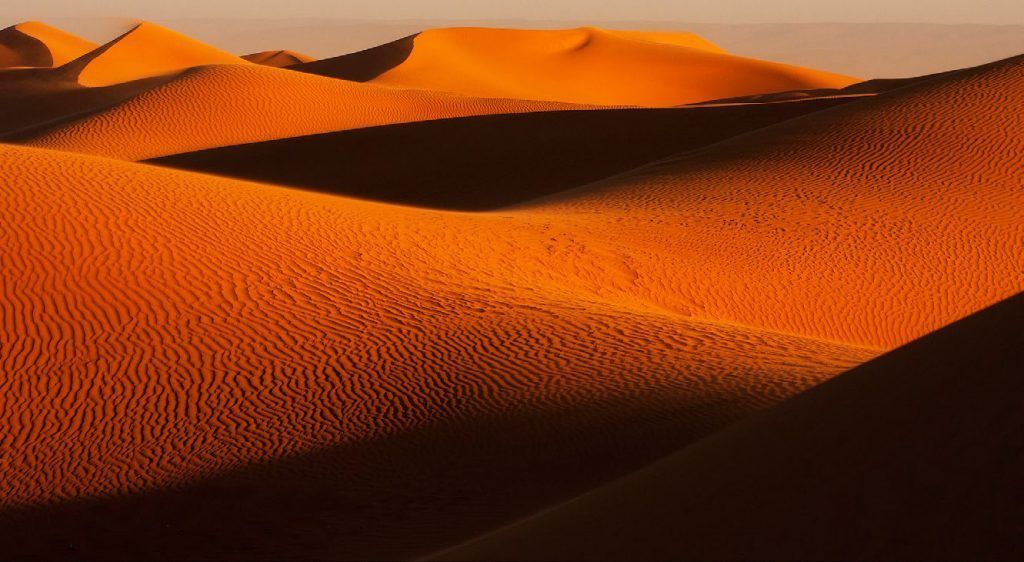
Photo by David Rosen
We have all seen stunning images of the desert before, and the picture above perfectly highlights the use of contours. Of course, in an area like the desert, the contours are immediately visible and available. However, this does not mean that you cannot use this technique in different terrain. Visualizing it may simply be more difficult.
Note that the photographer chose to use an 85mm lens here. This is a short telephoto focal length. The use of the longer focal length compressed the image, but the highlights and shadows allow it to retain a feeling of depth.
The use of the longer focal length compressed the image, but the highlights and shadows allow it to retain a feeling of depth.
Putting It Together
So know we know what minimalism is, why to use it, and a few techniques that can improve our minimalist shots. The material covered above was by no means exhaustive. In fact, it would take an entire book to cover the subject of minimalism. However, it should give you a starting point.
From here, you will need to practice removing unnecessary elements from your shots. Even if you do not choose to practice the minimalist style, you will find that your compositions benefit immensely from this practice. Simple, non-cluttered images will grasp the viewer’s eye far more quickly than a busy one that does not feel harmonious.
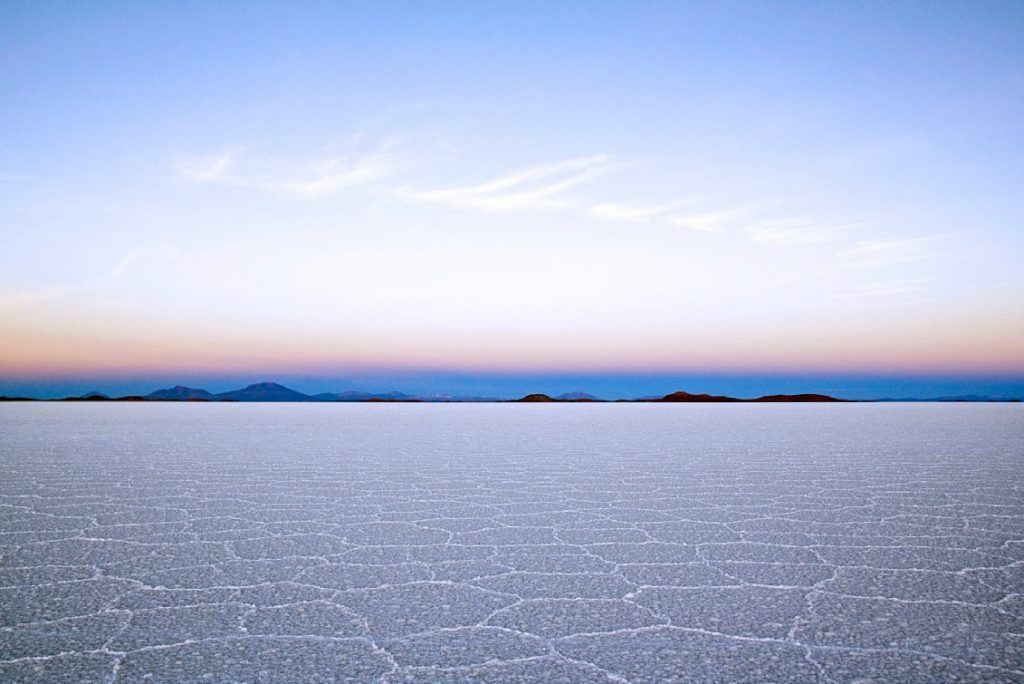
Photo by Dimitry B.
Recommended Reading: To learn more about using composition to improve your photography, including the effective use of space, grab a copy of Photzy’s best-selling book, Advanced Composition.


